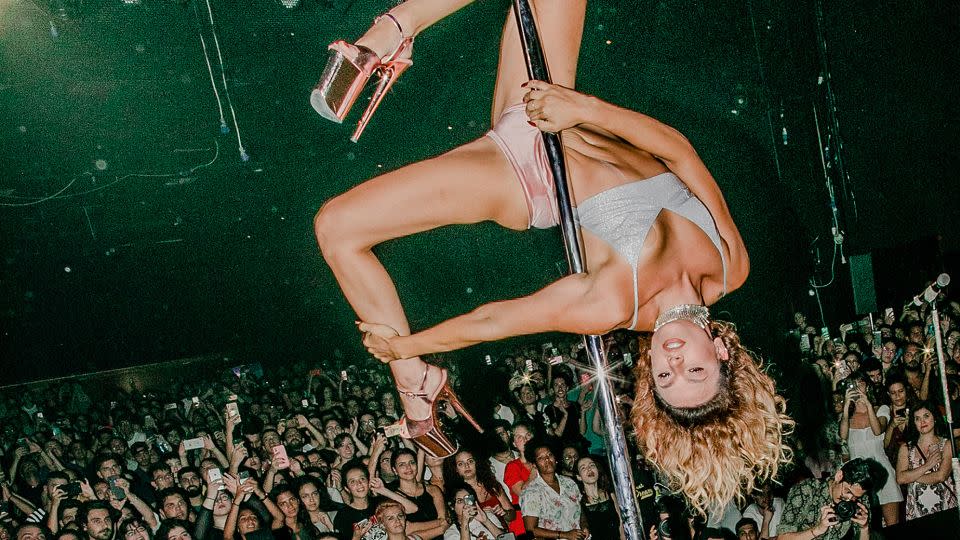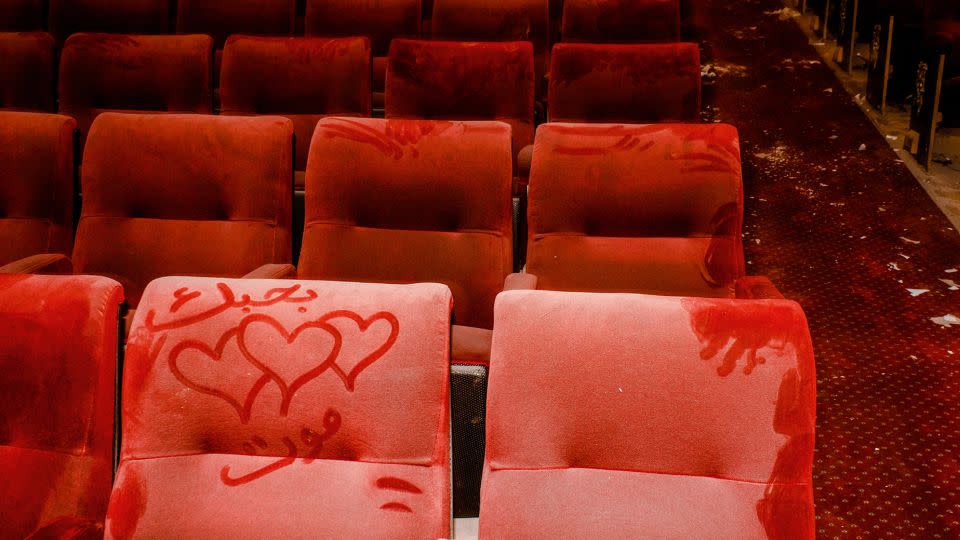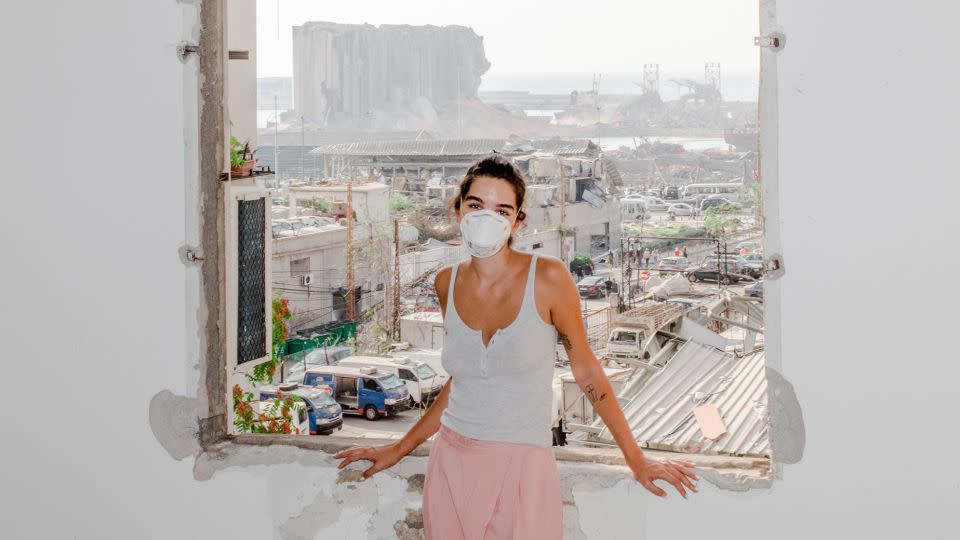Bombs and beauty: Photographing a Lebanon in flux
“Since the explosion I feel like a glass of water that overflows constantly,” wrote Lebanese photographer Myriam Boulos on August 20, 2020. A week earlier, a monumental blast — created by the ignition of large amounts of seized ammonium nitrate stored in a warehouse since 2014 — destroyed a large part of the port of Beirut, leaving more than 200 people dead and injuring some 6,000 others. For Boulos, only her camera could stem the flow of anger and despair.
In her debut photobook, “What’s Ours,” Boulos traces a decade-long period of turmoil in Lebanon, from 2013 to 2023, during which corruption, an economic crisis and conflicts over women’s rights have pitched the population against its government. In 2019, people took to the streets in what became known as the 17 October Revolution.
Boulos’ photographs and the accompanying journal entries featured in the book detail the turbulence — demonstrations, riot police, fires and fights — but also explore Lebanon’s exuberant and youthful subcultures and the ardent push for change. “Before October 2019, I felt like we were in a dead end. Everything was silenced, oppressed, and normalized,” Boulos, who is based in Beirut, said in an email interview. “The start of the revolution was a collective awakening.”

“What’s Ours” — the title is a statement not a question — references the fight for inalienable human rights: freedom for one’s body and speech. Boulos, who joined legendary photography collective Magnum Photos in 2021, emphasizes the struggle in visually arresting ways: tear gas blows through city parks, a woman stands in the blown-out window of her apartment. Boulos photographs soldiers, fire fighters, protesters, as well as Lebanese flora and butterflies.
She too is a paradox: an introvert with an eye for upheaval. “As a person who can literally spend months in my room, in my own world, and who has difficulties encountering the ‘real world’, photography is the perfect medium for me,” she said, explaining that people, sounds, lights and smells can overwhelm her. “Photography is a way of exteriorizing my thoughts and organizing my mind.”
Balancing art with risk
Boulos was born in Beirut in 1992 and, as a child, dreamt of becoming an illustrator (like her mother) or a musician. Her interest in photography came in her mid-teens. “I met a girl at school who became one of my closest friends, she had this sophisticated camera and I fell in love with the medium,” she said. Boulos’ photographs have since appeared in Time, Vanity Fair and Vogue magazines.

Sex and danger collide in her compositions. “I think that sexuality is still taboo in the entire world, and any sexuality that is not heteronormative is oppressed in the entire world too,” Boulos said. While Lebanon is relatively liberal for an Arab country, homosexuality remains illegal. Members of its queer community walk a tightrope of acceptance and feature in many of Boulos’ most striking images: The cover of “What’s Ours,” for example, features two women kissing. A tight frame of faces — eyes closed, immersed in one another — the shot crops out all external forces.
In another picture, two naked men embrace on a foggy mountainside, lit up by a gloriously purple night sky. These images of couples are “collaborations” with their subjects, stated Boulos adding that she, “became very aware of the importance of consent.”
But such pictures also come with risks. “In 2023 there have been campaigns and attacks against LGBTQ+ communities in Lebanon and this is the main reason why we are not distributing the book in Lebanon; in order not to put anyone in danger,” says Boulos.
Her photographs are abrasive in other ways. Textures — shattered glass, cracked concrete, bandages — create tactile compositions. Similarly, Boulos employs an often shocking, sometimes accentuated palette: blood and tattoos color a man’s torso, lipstick scars a woman’s face, a rescue worker in a reflective vest prays amongst the rubble.

And she finds beauty in the chaos. “It is important for me to look for tenderness,” Boulos explained. “I think it is a coping mechanism, a way of resisting and hanging on to desire and magic.” In one gentle shot, a tiny yellow flower sits cradled in the fragile palm of her grandmother’s hand.
Such optimistic aspects are hard to find in light of the Israel-Hamas war, she noted. “(It) has made me question everything, including my approach as a documentarist. I realized one of the things I do while representing Lebanon and the region is humanizing us through personal stories. I am naturally interested in documenting personal stories, but I am tired of trying to prove to the world that we, as Arabs, are human too.”
Eschewing didactic captions, “What’s Ours” instead features extracts from Boulos’ journals and snippets of conversations as well as a quote from Lebanon’s national poet Mahmoud Darwish: “And we don’t dream of more than a life like life itself.”
Does Boulos, the shy revolutionary, have faith that profound societal change is coming? “Hope is not one of the notions I think about in my life,” she observed, adding that, both in regard to intimacy and politics: “I think more about resistance and liberation.”
Myriam Boulos: “What’s Ours” is published by Aperture.
For more CNN news and newsletters create an account at CNN.com

